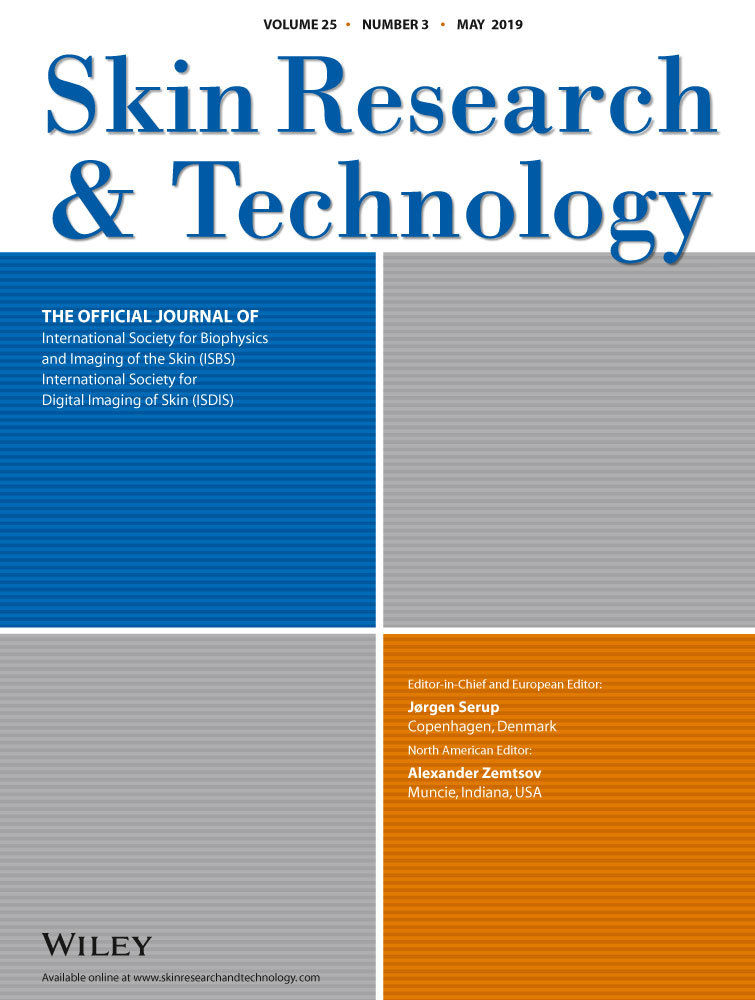An extended high-frequency ultrasound protocol for assessing and quantifying of inflammation and fibrosis in localized scleroderma
Funding information
Supported by Medical University of Silesia: KNW-1-086/K/7/K.
Abstract
Background
Clinical characteristics of the lesions are used to identify activity and damage in localized scleroderma (LoS). For high-frequency ultrasound (HF-US), the features of active lesions were described.
Materials and Methods
Clinical signs of activity and damage in LoS lesions were assessed with the use of Localized Scleroderma Cutaneous Assessment Tool (LoSCAT) and HF-US by two examiners independently. All US images were obtained using a 20 MHz HF-US (DermaLab System, Cortex Technology, Hadsund, Denmark). The dermal thickness (DT) and echogenicity (intensity score, IS) of the LoS lesional dermis were measured in the area of each lesion with the highest score for erythema (ER), skin thickness (ST), and dermal atrophy (DAT). Measurements were compared to the site-matched unaffected skin. The relative difference of DT and IS values was calculated between each lesion and its normal control for comparison among different clinical scores for ER, ST, and DAT.
Results
A total of 92 lesions in 40 adult patients were examined with HF-US. Thirty one lesions were erythematous, 26 were in sclerosis, and 35 were in atrophy. A correlation between the clinical evaluation of the LoS lesions and US measurements was found. The sensitivity and specificity of HF-US were 97% and 90%, respectively. The positive predictive value was 83%, negative predictive value—98%. Interrater reliability was excellent for LoSCAT and HF-US findings.
Conclusion
High-frequency ultrasound allows an accurate assessment of the inflammatory and fibrotic skin lesions in LoS.
CONFLICT OF INTEREST
The authors declare that they have no conflict of interest.




